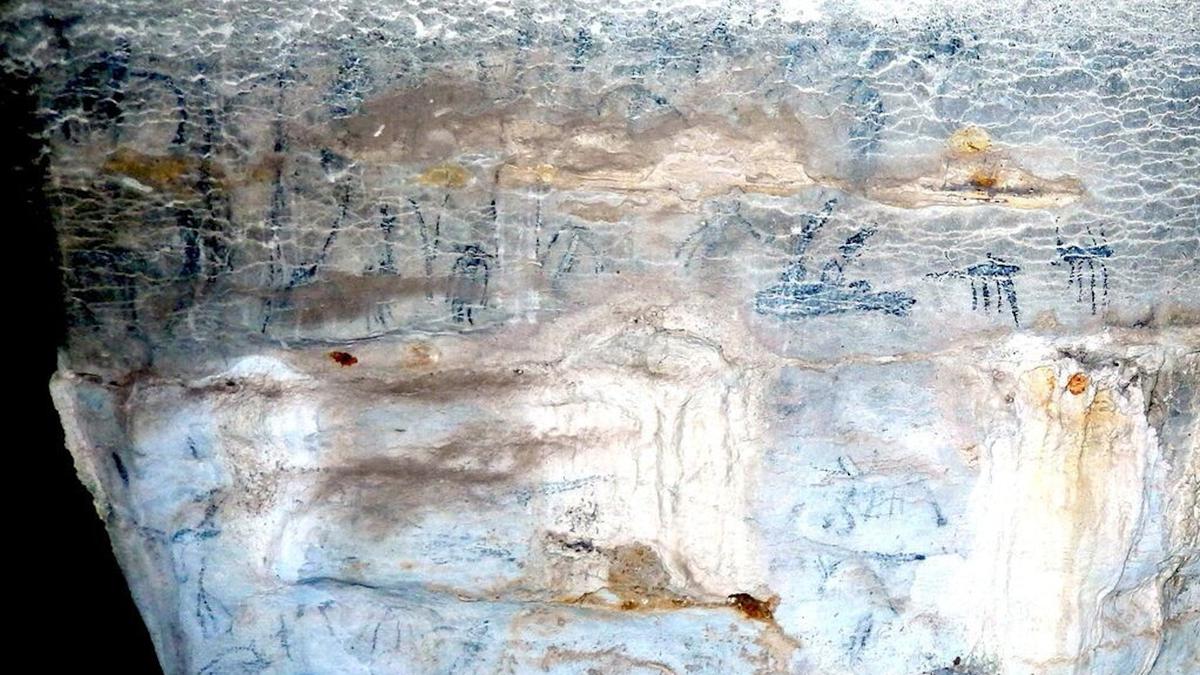About Andriamamelo Cave
- It is situated in the western Madagascar.
- It is located in karstified limestone of the Paysage Harmonieux Protege de Beanka.
- This is part of an extensive karst region that includes the Parc National de Bemaraha to the south, a UNESCO World Heritage site, and the little-studied Antsingimavo karst area to the north.
Key findings
- In this cave truly pictorial art, depicting images of nature with human-like and animal-like figures have been discovered.
- The dramatic discoveries contained several surprises, including hints at some remarkable cultural connections.
- First, scenes depicted in some cases linked up fairly directly to Egyptian religious motifs from the Ptolemaic period (300-30 BCE)
- Second, other inferences from symbols and writing on the walls showed connections to the Ethiopian and Afro-Arab worlds.
- Finally, prevalent symbology and motifs evoked a two-millennia-old cave art style from Borneo.
- At least three extinct animals of Madagascar (thought to have been extinct for many centuries) may be depicted – a giant sloth lemur, elephant birds and a giant tortoise.
- Egyptian connections are hinted at in eight major images, including a falcon (Horus); the bird-headed god Thoth; the ostrich goddess Ma`at and two human-animal figures which were similar to Anubis – an ancient Egyptian god usually depicted as a man with a canine head.
Q1) What is Karst topography?
It refers to natural landscape that is largely the result of chemical weathering by water, resulting in caves, sinkholes, cliffs, and steep-sided hills called towers. These features form when water picks up carbon dioxide from the atmosphere and ground to form carbonic acid.
Source: Madagascar cave art hints at ancient connections between Africa and Asia
Last updated on June, 2025
→ UPSC Notification 2025 was released on 22nd January 2025.
→ UPSC Prelims Result 2025 is out now for the CSE held on 25 May 2025.
→ UPSC Prelims Question Paper 2025 and Unofficial Prelims Answer Key 2025 are available now.
→ UPSC Calendar 2026 is released on 15th May, 2025.
→ The UPSC Vacancy 2025 were released 1129, out of which 979 were for UPSC CSE and remaining 150 are for UPSC IFoS.
→ UPSC Mains 2025 will be conducted on 22nd August 2025.
→ UPSC Prelims 2026 will be conducted on 24th May, 2026 & UPSC Mains 2026 will be conducted on 21st August 2026.
→ The UPSC Selection Process is of 3 stages-Prelims, Mains and Interview.
→ UPSC Result 2024 is released with latest UPSC Marksheet 2024. Check Now!
→ UPSC Toppers List 2024 is released now. Shakti Dubey is UPSC AIR 1 2024 Topper.
→ Also check Best IAS Coaching in Delhi
























